Below is an excerpt from the red dragon book. It deals with the handling of variable length data items in the activation record of the procedure.
Pascalis almost unique among languages in requiring that arrays local to a procedure have a length that can be determined at compile time. More often, the size of a local array may depend on the value of a parameter passed to the procedure. In that case, the size of all the data local to the procedure cannot be determined until the procedure is called.A common strategy for handling variable-length data is suggested in Fig. 7.15, where procedure
phas three local arrays. The storage for these arrays is not part of the activation record forp; only a pointer to the beginning of each array appears in the activation record. The relative addresses of these pointers are known at compile time, so the target code can access array elements through the pointers.Also shown in Fig. 7.15 is a procedure
qcalled byp. The activation record forqbegins after the arrays ofp, and the variable-length arrays ofqbegin beyond that.
In the first portion of excerpt above the text talks about the feature of the Pascal programming language and then they talk about a possible implementation of the same. Now I am not acquainted with Pascal and thought of understanding the way the situation is handled in C.
I know that arrays can be created dynamically in C using the malloc and its sister functions, which causes allocation of memory on heap and the the pointer to the first byte is returned to us. Not an issue at all.
If we create arrays in C where the size of the array is a constant as in:
int function() {
int a[100];
}
then the array is placed in the local data section of the activation record shown below:
In the above example, the size of the array a is know at compile time. No issues with that.
Now the situation : "More often, the size of a local array may depend on the value of a parameter passed to the procedure. In that case, the size of all the data local to the procedure cannot be determined until the procedure is called."
Case 1:
Now let us consider the code below:
int function(int n){
int a[n];
}
int main() {
function(10);
}
Now in the situation above the size of the parameter n to the function can be known at compile time and hence the size of the array a though variable can be known at compile time. With this logic does C allocate the above array a in the manner as shown in fig 7.15 in the dragon book?
Case 2:
int function(int n){
int a[n];
}
int main() {
int x;
scanf("%d",&x);
function(x);
}
Now in the situation above the size of the parameter n to the function can be known only at runtime (?) or is it still the situation as above, i.e. known at compile time ? Now in this code, where is the array a allocated. Heap or stack?
I went here, here and here but did not find the explanation which I am looking for...
Here I am talking about C99

